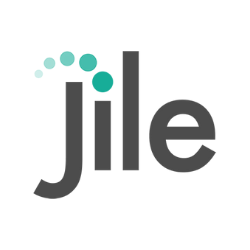Agile Workflow: Your Go-To Guide to an Adaptive Process

In today's competitive landscape, every business strives to race past its competitors, and an agile approach is deemed pivotal for the same. Let's learn more about what an agile workflow is, how relevant and crucial it is for businesses, and how to implement an agile workflow right for the first time.
The Agile workflow process is one of the most innovative and effective processes available today. It has been used in many different industries to help businesses quickly adapt to changing scenarios, competition, and the latest trends. It can be implemented in nearly any industry, with any type of project, and on virtually every platform. This blog post will introduce you to an agile workflow process that can be customized for your specific business needs.
What is an Agile workflow?
An Agile workflow is a process that allows organizations to quickly adapt to changing business needs. It is based on the principle of continuous improvement and focuses on delivering value to the customer on a consistent basis. The goal of an Agile workflow is to create a flexible process that can be adapted to any situation.
The key components of an Agile workflow are:
- Continuous communication
- Flexible processes
- Customer feedback
- Team collaboration
The Agile workflow process is an effective way for companies of any size to deliver projects on time and within budget. It also allows them to adapt their strategy as business needs change without completely overhauling their existing processes or halting work on current projects. Organizations can use Agile frameworks like Scrum Software, Kanban software, Lean Startup Methodology, and Feature Driven Development (FDD) with traditional project management tools such as Microsoft Project & Primavera. This enables large teams across different locations to collaborate seamlessly through online communication platforms.
Steps involved in Agile workflow process
There are a number of steps involved in setting up an Agile workflow process. The following outlines the key steps:
Ideation
In the ideation phase, the team comes up with new ideas for products or features. This can be done through brainstorming sessions, customer feedback, market research, etc. The purpose of this step is to generate a large number of ideas that can be filtered down in later steps. Because this can be a very time-intensive step, many teams break it down into smaller chunks. There are some key elements to keep in mind during the ideation phase, such as defining the problem, generating a large number of ideas, selecting the best ideas, defining and understanding roles, and more.
Inception
In the inception phase, the team selects the best ideas and begins to define them in more detail. This includes understanding the problem, determining what needs to be built, and creating a plan for development. The goal of this step is to create a high-level plan that can be used in later steps. Make sure to plan for contingencies during this step. You can create an inventory of ideas that are not selected in the ideation phase and determine whether they should be reincorporated into later phases or discarded entirely.
Iteration
In iteration, the team begins creating a plan to execute on their high-level plans from inception. This includes breaking down features/products into tasks, determining how long each task will take to complete, identifying dependencies between components and tasks, assigning roles within your teams (e.g., scrum master) etc. The purpose of this step is to turn your high-level plans into something more tangible that everyone can understand before beginning development work on them. Also, make sure you do some additional market research during this time as there is a good chance that the requirements will change during development.
Release
The release phase is where the team begins to implement their plans and track progress against them. This includes using a task management tool to track tasks, status updates, etc. In addition, they will also begin testing the product or feature in a live environment and getting feedback from customers/end users. The goal of this step is to ensure that the product or feature meets customer needs and can be released into production.
Production
The production stage is where the project or product goes live and begins to be used by customers/end users. The team continues to monitor progress, get customer feedback, and make adjustments if necessary. The goal of this step is to ensure that you are able to respond quickly when things go wrong (e.g., bugs) or after changes in business needs (e.g., new features).
Retirement
The retirement stage is the final stage of the project or product. In this stage, the team completes any remaining tasks, archives all documentation and artifacts, and ends support for the product/feature.
Traditional vs. Agile Project Workflow
Traditionally, projects are planned out in detail before beginning development work. The project workflow process is specified upfront, and little to no changes are made over the life of the project. This can be beneficial if you know exactly what your product will look like (e.g., building a house). However, this isn't always necessary or possible (e.g., creating software).
With Agile Workflow, teams develop products incrementally through short cycles known as sprints. At the end of each cycle/sprint, they demonstrate working code that meets customer needs & provide feedback for future iterations so they can plan accordingly. One key aspect of agile processes is flexibility - allowing plans to change based on new information gained during implementation rather than treating change as a disruption. This can be beneficial in fast-paced environments where requirements are constantly changing (e.g., technology startups).
How to create an Agile workflow?
The process of creating an Agile workflow or Agile Ways of Working requires the following steps::
Adopt the right Agile practices
There are a number of Agile practices that you should consider adopting, such as scrum, extreme programming (XP), continuous integration & delivery, etc. But how do you determine which one is the right choice? The right Agile practice or Agile workflows for your project needs, team members/stakeholders (e.g., experience), and the type of product that will be built (e.g., web app vs mobile apps). So, do your research and select the right ones for you.
Choose a framework
A framework provides a structure for your agile workflow and helps ensure that everyone is on the same page. There are several frameworks to choose from, such as scrum, kanban, XP, etc. Again, you need to select the one that is best suited for your project needs & team members/stakeholders. The right framework allows you to focus on the work that needs to be done and not on the process.
Develop a roadmap
A roadmap helps you determine the order in which work will be done, who is responsible for doing that work, etc. This includes both immediate & future plans (e.g., release planning). This can be the toughest feat to achieve because the roadmap has to balance between what is desired and be in sync with the existing resources (e.g., team members, budget). Furthermore, you need to make sure that everyone on your team is in agreement and there isn't any confusion about who will do what work and when - otherwise, this can lead to a lack of accountability.
Assign sprint teams
This is where you divide the team into smaller groups to focus on specific work. This should be based upon project needs (e.g., backend vs. frontend), experience, and overall availability of resources/team members. Also, remember that each sprint can have its own team(s), so there isn't any conflict within your agile workflow process or between teams if they are working toward their own goals simultaneously - which will likely happen!
Implement the Agile workflow
This is where you actually put all the previous steps into action. You should have a clear plan for how you will work and what needs to be done in order for everyone to be on the same page. There are a number of tools and techniques that can help with this, such as daily stand-ups, retrospectives, burndown charts, etc. As your project progresses (and new information is obtained), it's important to continually review & adjust your agile workflow process. Some organizations also use Agile workflow software for this purpose. This helps ensure that everything is aligned with your project goals/objectives and that team members are meeting their responsibilities.
The challenges of scaling a workflow
Scaling an agile workflow can be challenging because it requires a different approach than what you might have used to establish your initial process. For example, if the team is too big for daily stand-ups, then this could lead to communication issues and a lack of accountability. Similar challenges are also likely to occur as more teams are added to the mix. The scaling challenge isn't just about being able to meet everyone's needs but rather ensuring that everyone has a voice in deciding how things will work moving forward, so there aren't any surprises when something new happens (e.g., someone leaves).
Moreover, the agile workflow process needs to be flexible enough so that it can adapt to changes (e.g., new team members, product requirements) without disrupting the entire system. This is where a solid framework and roadmap come into play. They help ensure that any changes are made in a controlled manner and don't impact the overall goal of the project.
Ultimately, scaling an agile workflow requires patience, communication, and collaboration among team members/stakeholders. There isn't one silver bullet that will solve all your problems but with some trial and error (and adjustments along the way), you should be able to get things working smoothly for your organization. Don't wait for next big trouble to happen! Request Jile free subscription to smoothly execute your agile workflows in your team.
Thanks for subscribing to our latest blogs, thought leadership and other product updates!
Read our Privacy Notice to know more. You can opt-out of all communications anytime.
